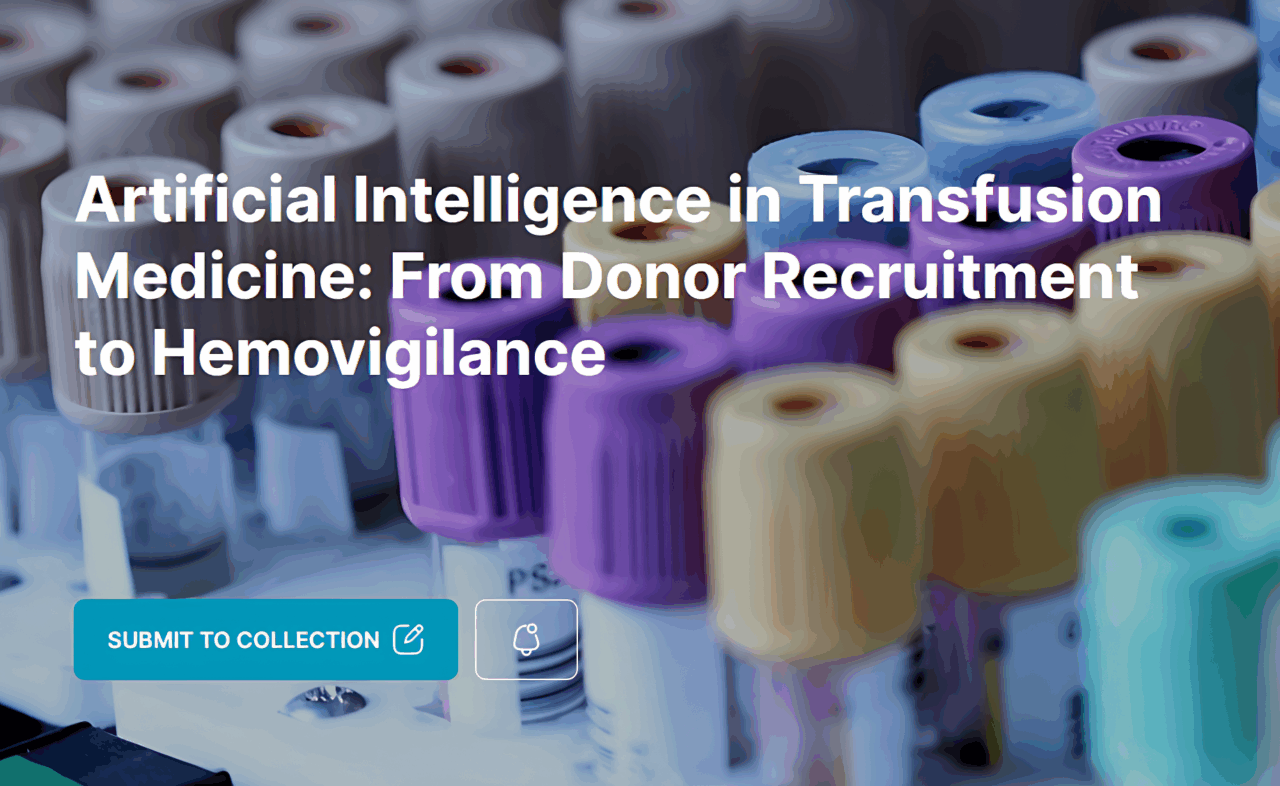
Artificial Intelligence in Transfusion Medicine: From Donor Recruitment to Hemovigilance
Radheshyam Meher, Senior Resident at AIIMS, psoted on LinkedIn:
”Exciting Announcement
I am honored to serve as Guest Editor for a special collection in Cureus on:
“Artificial Intelligence in Transfusion Medicine: From Donor Recruitment to Hemovigilance”
This collection will highlight how AI is reshaping every step of the transfusion medicine journey, from innovative donor recruitment and retention strategies to predictive inventory management, AI-driven blood safety and pathogen detection, automated hemovigilance, and advanced clinical decision support.
We welcome original research, reviews, case studies, and perspectives that showcase both technological innovation and real-world applications, while also addressing the ethical and regulatory challenges of AI in healthcare.
Our aim is to bring together a global, interdisciplinary perspective that bridges digital health, transfusion science, and clinical practice, ultimately driving improvements in efficiency, safety, and patient outcomes.
Topics include (but are not limited to):
- AI for donor recruitment and retention
- Predictive analytics for transfusion needs
- Machine learning in inventory management
- Automated hemovigilance and adverse event monitoring
- AI in therapeutic apheresis and cellular therapies
- NLP in transfusion data
- Ethical and regulatory considerations
I invite researchers, clinicians, data scientists, and innovators to submit your work and be part of this forward-looking initiative.
Let’s work together to shape the future of AI in Transfusion Medicine.
Submit here.”
Stay updated with Hemostasis Today.
-
Dec 17, 2025, 15:24Laura Dormer on a Motor Relearning Program for Chronic Stroke Patients
-
Dec 17, 2025, 15:01WSO: United Nations Has Formally Adopted the Political Declaration on NCDs and Mental Health
-
Dec 17, 2025, 14:44Bryan Unger: 1st Patient Has Been Enrolled in NuvOx Therapeutics’ Phase IIb NOVEL Trial
-
Dec 17, 2025, 14:29Sarah Richardson: Feeling So Proud to Be a Part of the Advocacy Team for the HFA
-
Dec 17, 2025, 06:28Wolfgang Miesbach on Linus Völker’s Presentation of Caplacizumab as Frontline Therapy for iTTP
-
Dec 17, 2025, 06:11Lisa Murphy Thanks Stroke Foundation Team for An Impactful, Rewarding and Incredible Year
-
Dec 17, 2025, 06:05Emmanuel J Favaloro Shares A Study on AI and Machine Learning in Thrombosis and Hemostasis
-
Dec 17, 2025, 05:54Michael Bruckman: Fantastic to See Platelet-Inspired Nanoparticles Gaining Attention!
-
Dec 17, 2025, 04:00Peter Verhamme on Genetic Predisposition to Thromboembolism and COVID
